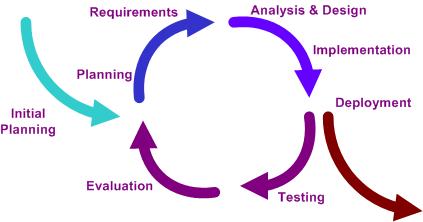 |
One of the biggest problems with process design/redesign/improvement is the need to secure adoption of the new and/or improved process. This is especially true where processes are being changed or improved. The owners of those processes are typically asked by “experts” or study groups to adopt changes to the way they do business based on the thinking of the study group around how the owners could do business better than they currently are.
This means that the process owners must buy into the changes and embrace them on a daily basis. There is always an inertial resistance to any change. Where those changes are perceived as arising externally and are presented in a way that seems to say, “If you were as smart as we are, this is how you would do business” there is an additional level of resistance added to the mix. Often this means that a “malicious compliance” is as high as you can expect the adoption process to rise.
The implication for the enterprise is that scarce resources have to be diverted to the adoption effort. In addition to the time and effort already invested in study and planning the organization must spend time getting process owners to see the benefits and expend their energy in adopting the changes. This makes change an expensive proposition and often results in resources wasted when the changes are formally or effectively shelved.
But . . . there is a more excellent way. In any change effort ultimate buy-in is required. The change is implemented by the process owners and for that to be successful the change agents must procure the buy-in of the implementers. This is most effectively done by making the process owners who will become the implementers are substantive participants in the design phase of the changes.
We have found from hard experience with a variety of approaches that there is a very effective way to do that. We begin with model of the existing processes that is obtained directly from the process owners. We model the process that is actually used- not the process that is supposed to be used (as contained in “process manuals”) or the process that management thinks is used but the process as used by the process owners.
We used interviews with the process owners following the SIPOC thread from Lean Six Sigma (Suppliers-Inputs-Process- Outputs- Customers). We asked process owners: What do you produce? (Outputs) Who uses what you produce? (Customers) What do you need to produce outputs? (Inputs) Where do you get the inputs? (Suppliers) What do you do to Inputs to make them into Outputs? (Process)
We put this information into a model of the process. We began at a high level and then broke it down by opening up the process steps and garnering more detailed SIPOC’s. The SIPOC chains linked together with process steps becoming customers of the previous step and suppliers for the ensuing steps. Multiple outputs and inputs meant multiple customers and suppliers and what emerged was a web that represented the process as currently implemented.
We fed this information into our modeling tool (CORE) and produced visualizations for the process owners to review. Usually the structured diagrams produced directly from the system model were the most easily understood as they were closely analogous to the “flowcharts” common in the process owners milieu. Rarely was more than 5 to 10 minutes orientation to the representation necessary before the review was off and running. The process owners offered corrections to the model which we noted for inclusion in a revision of the model. We iterated the interview-model-vet process until the process owners said, “That’s it! That’s me!”
In the process several things had invariably happened. Although we didn’t set out to improve or change the process until we had an accurate model, in the review sessions the process owners almost always said something like, “That’s how I do it but . . . wouldn’t it be better if I did it this way?” They added their own improvements as we went. Seeing the model made them think creatively about their processes.
Even more importantly the “That’s it! That’s me!” that emerged from the iterative interview-model-vet process represented ownership of the model. With that ownership- especially when it was coupled with the investment of their own improvements- came buy-in. They owned the model, had a stake in the redesign/improvement effort and no back end sales job was necessary.





